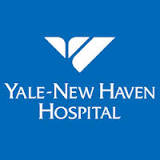Image-Enhanced Endoscopy (IEE) for Diagnosis of Non-Erosive Reflux Disease
| Status: | Completed |
|---|---|
| Conditions: | Gastroesophageal Reflux Disease |
| Therapuetic Areas: | Gastroenterology |
| Healthy: | No |
| Age Range: | 21 - 75 |
| Updated: | 7/13/2016 |
| Start Date: | March 2015 |
| End Date: | July 2016 |
Image-Enhanced Endoscopy for the Diagnosis of Non-Erosive Reflux Disease: A Prospective Case-Control Trial
When treating persistent heartburn from gastroesophageal reflux disease (GERD) that does not
respond to conventional treatment (a class of medications called proton pump inhibitors), it
is important to be able to distinguish between erosive GERD and non-erosive GERD (called
NERD).
Currently the best method the investigators have to make this distinction is esophageal
24-hour pH and impedance testing. The test involves inserting a catheter into the esophagus
through the nose and having the catheter maintained in this position for 24 hours This test
is invasive, can be uncomfortable, and it is expensive and time consuming.
The investigators are hoping that image enhanced technology will identify characteristics
that are found more commonly in patients with non-erosive GERD compared to controls and
therefore provide evidence that may allow us to replace pH and impedance testing with the
image enhanced endoscopy as the best way to diagnose NERD.
Participants will be either patients undergoing an upper endoscopy as part of their standard
clinical evaluation for heartburn that does not respond to PPIs or patients undergoing
standard clinical evaluation endoscopy for other reasons.
respond to conventional treatment (a class of medications called proton pump inhibitors), it
is important to be able to distinguish between erosive GERD and non-erosive GERD (called
NERD).
Currently the best method the investigators have to make this distinction is esophageal
24-hour pH and impedance testing. The test involves inserting a catheter into the esophagus
through the nose and having the catheter maintained in this position for 24 hours This test
is invasive, can be uncomfortable, and it is expensive and time consuming.
The investigators are hoping that image enhanced technology will identify characteristics
that are found more commonly in patients with non-erosive GERD compared to controls and
therefore provide evidence that may allow us to replace pH and impedance testing with the
image enhanced endoscopy as the best way to diagnose NERD.
Participants will be either patients undergoing an upper endoscopy as part of their standard
clinical evaluation for heartburn that does not respond to PPIs or patients undergoing
standard clinical evaluation endoscopy for other reasons.
Evaluation of the utility of image-enhanced endoscopy (IEE) in the diagnosis of non-erosive
reflux disease (NERD), defined as heartburn documented to be associated with reflux on
impedance-pH testing in the absence of erosions on standard white-light endoscopy (WLE)
during initial endoscopy.
The investigators will examine the following characteristics for IEE sensitivity,
specificity, positive predictive values, and negative predictive value: squamo-columnar
junction (SCJ) vascularity, micro-erosions, SCJ pit pattern, and combinations of these
characteristics. The investigators will also look at abnormal morphology of intra-papillary
capillary loops (IPCLS) using the newer generation Narrow Band Light (NBI-190 endoscopes and
assess the identification of their presence using I-scan. Additionally, the investigators
will examine real-time diagnostic yield of reflux diseases by IEE (in vivo diagnosis of
reflux disease) and analyze obtained images and results to calculate inter-observer
agreement.
IEE utilized will be commonly available I-scan (Pentax) and Narrow Band Imaging (Olympus).
Consecutive patients who meet eligibility criteria and are scheduled for upper endoscopy at
locations specified in this record will be invited to participate.
reflux disease (NERD), defined as heartburn documented to be associated with reflux on
impedance-pH testing in the absence of erosions on standard white-light endoscopy (WLE)
during initial endoscopy.
The investigators will examine the following characteristics for IEE sensitivity,
specificity, positive predictive values, and negative predictive value: squamo-columnar
junction (SCJ) vascularity, micro-erosions, SCJ pit pattern, and combinations of these
characteristics. The investigators will also look at abnormal morphology of intra-papillary
capillary loops (IPCLS) using the newer generation Narrow Band Light (NBI-190 endoscopes and
assess the identification of their presence using I-scan. Additionally, the investigators
will examine real-time diagnostic yield of reflux diseases by IEE (in vivo diagnosis of
reflux disease) and analyze obtained images and results to calculate inter-observer
agreement.
IEE utilized will be commonly available I-scan (Pentax) and Narrow Band Imaging (Olympus).
Consecutive patients who meet eligibility criteria and are scheduled for upper endoscopy at
locations specified in this record will be invited to participate.
Inclusion Criteria:
- Patients scheduled for an upper endoscopy for anemia, weight loss, diarrhea, or
screening for esophageal varices without heartburn or other GERD symptoms and
patients scheduled for upper endoscopy for heartburn not resolving with PPIs
Exclusion Criteria:
- Patients who have evidence of erosive esophagitis under white-light endoscopy
- Patients with Barrett's esophagus or esophageal malignancy on prior or current
endoscopy
- Patients unable or unwilling to sign informed consent
We found this trial at
2
sites
Yale-New Haven Hospital Relying on the skill and expertise of more than 4,500 university and...
Click here to add this to my saved trials
Click here to add this to my saved trials
